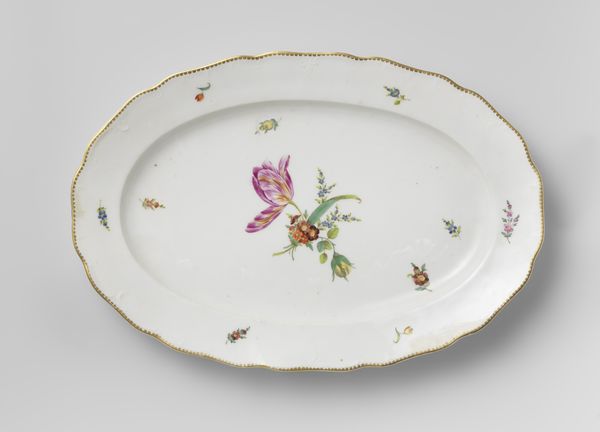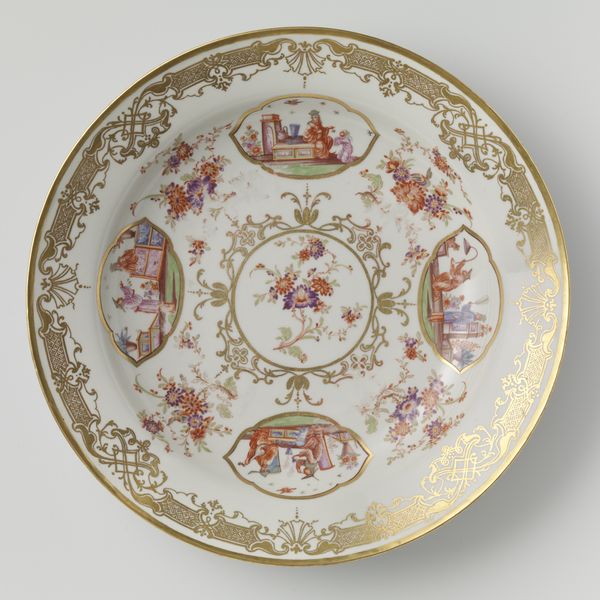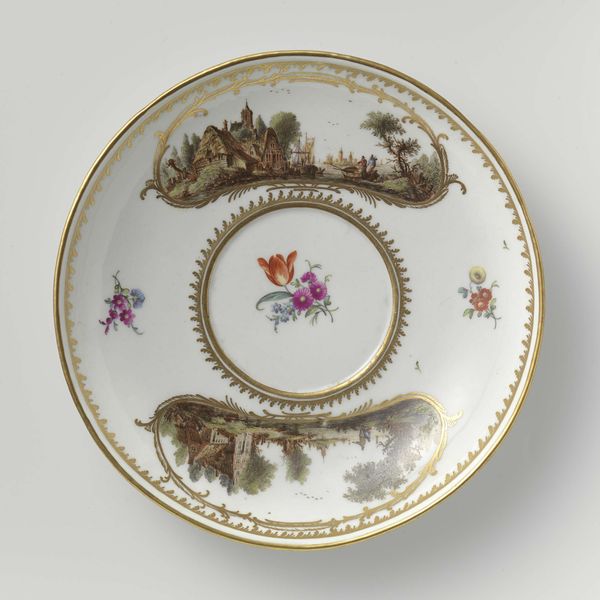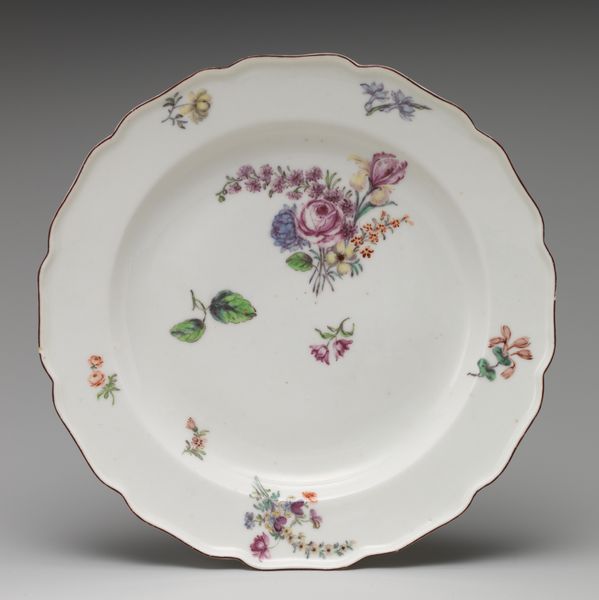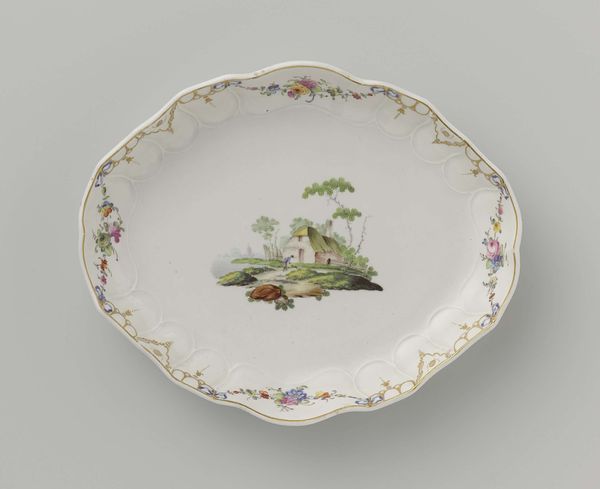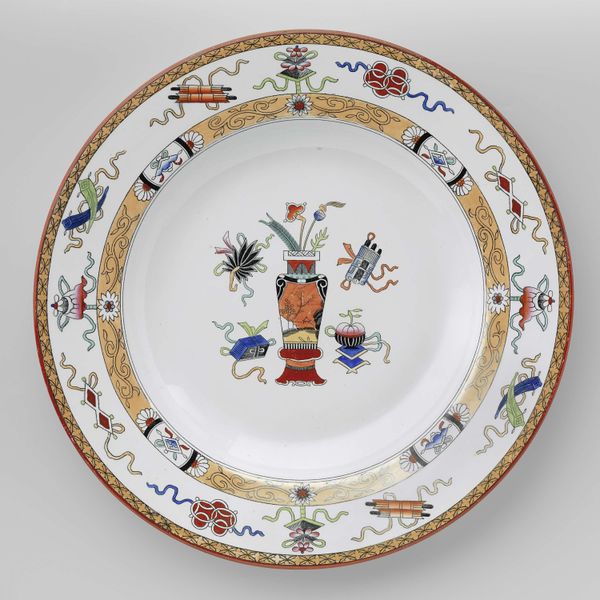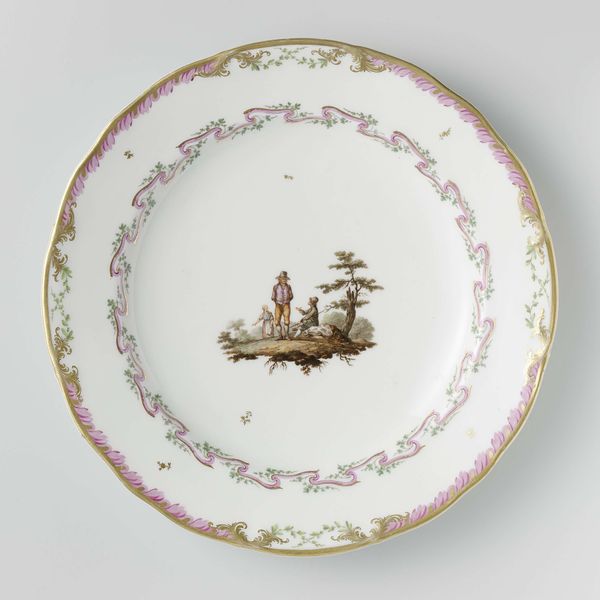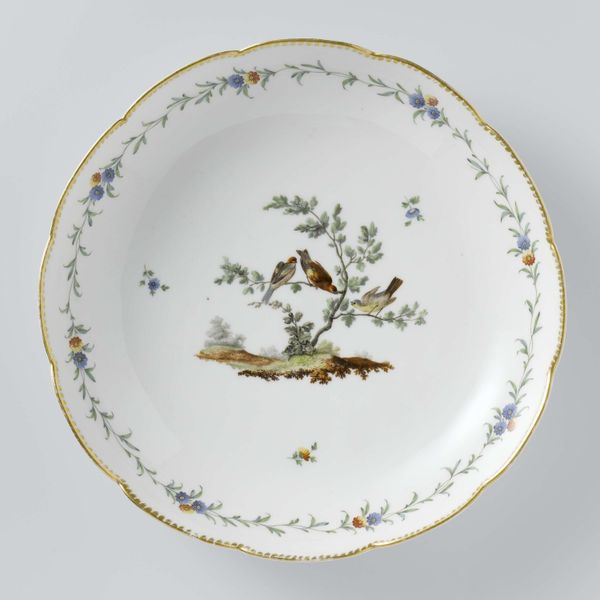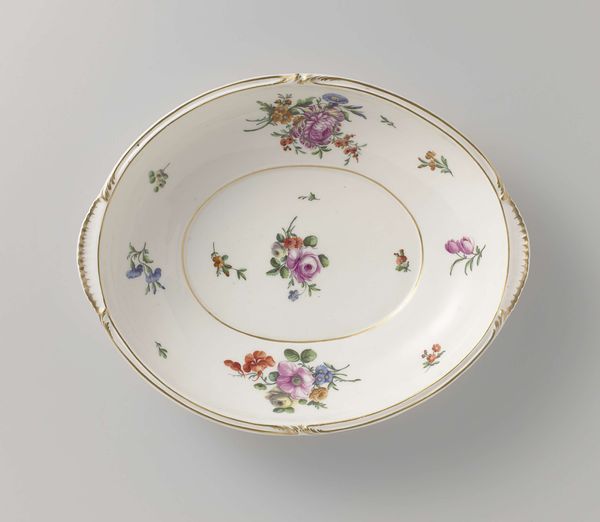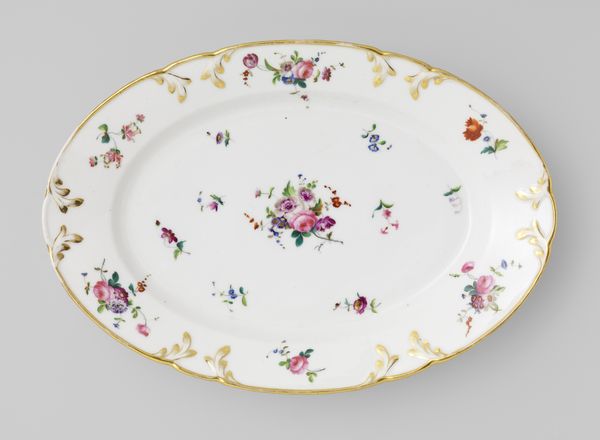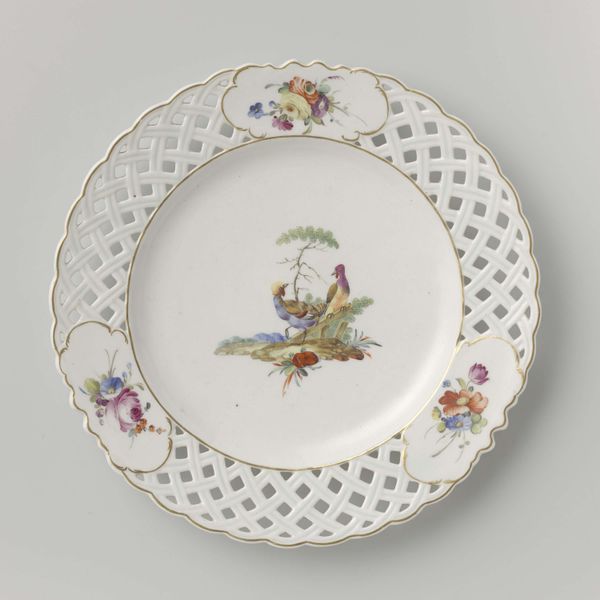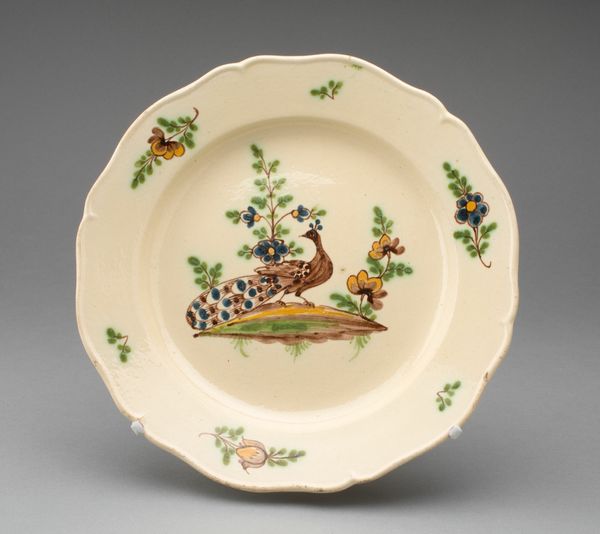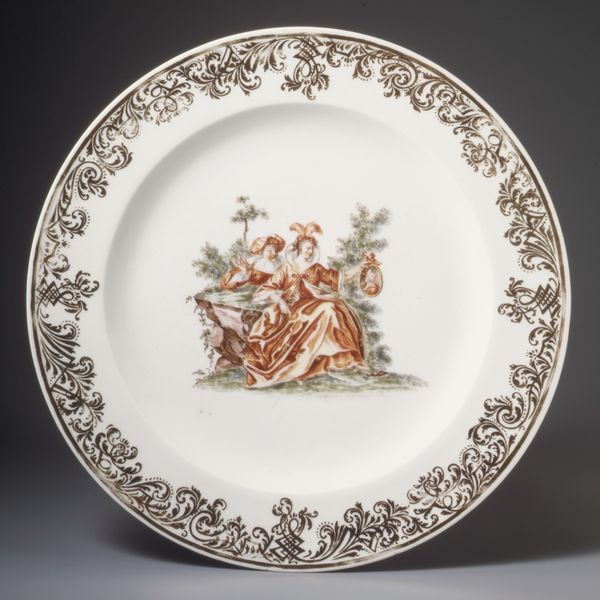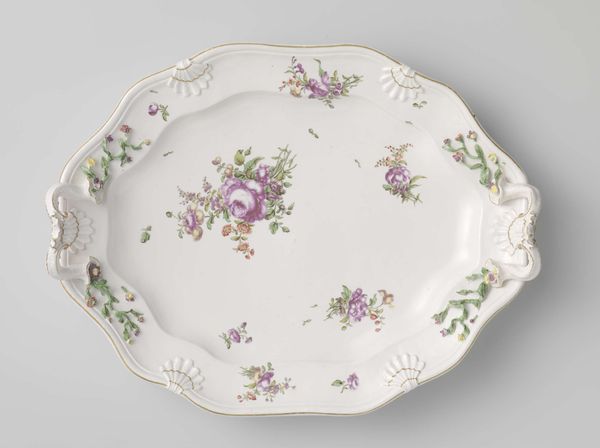
Dimensions: height 5 cm, width 38.5 cm, depth 27.5 cm
Copyright: Rijks Museum: Open Domain
Curator: This is a plate made at the Loosdrecht porcelain factory in the Netherlands, sometime between 1774 and 1784. It's currently held in the collection of the Rijksmuseum. Editor: It strikes me as incredibly delicate. The palette is so restrained and the floral motifs scattered around the rim create a sense of whimsy. Curator: The Rococo style evident in its ornamentation definitely speaks to the luxury consumption patterns of the Dutch elite at the time. What I find particularly compelling is that the central image depicts birds. Think about the resources – from kaolin clay to skilled labour—needed to produce such fine objects. Editor: Absolutely, it’s impossible to divorce this piece from its context of production and consumption. Consider the lives intertwined with its creation: from the miners extracting the raw materials to the artists painstakingly hand-painting those birds. What do those images of birds tell us? Curator: The decorative motifs were usually based on print sources that became more widespread in the 18th century. What would this have meant to its contemporary viewer, particularly regarding humankind's relationship to the natural world? The painting and gilding process speak volumes about specialization. Editor: Right, the birds can signify many things depending on the cultural lens – freedom, fragility, even colonial power over the natural world as captured for the aesthetic pleasure of the wealthy. It seems, though, that by that time such symbolic meaning began to diminish and to dissolve in favor of aesthetic decor. The shape of the dish is beautiful. The undulating rim calls back to earlier works. Curator: Indeed, mass culture had the same influence at the time. The material composition – hard-paste porcelain mimicking fine Chinese wares, further underscores the networks of trade and influence that were shaping European tastes and craft practices. And, despite its apparent delicacy, these plates were made for dining and thus the process behind their fabrication reveals a more robust reality behind elite entertainment. Editor: So true. And looking closely reminds us that an object like this connects to power structures and evolving ecological consciousness. Curator: Seeing this piece makes you aware of the complex history of artistry. Editor: It makes me consider all the implications present in its details.
Comments
No comments
Be the first to comment and join the conversation on the ultimate creative platform.
